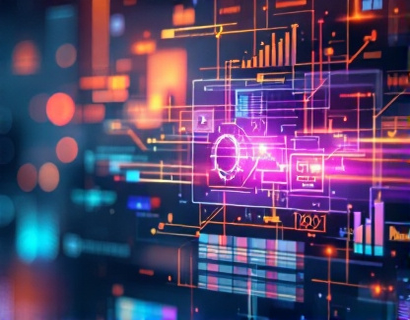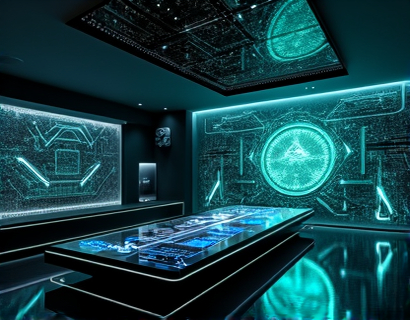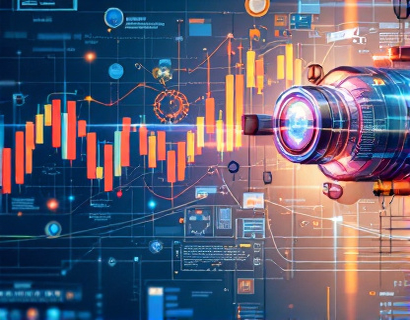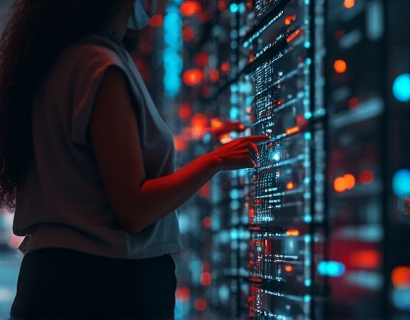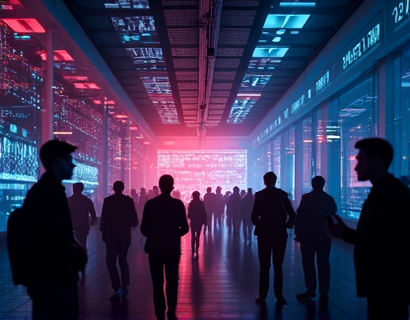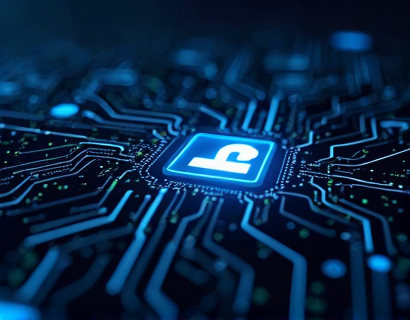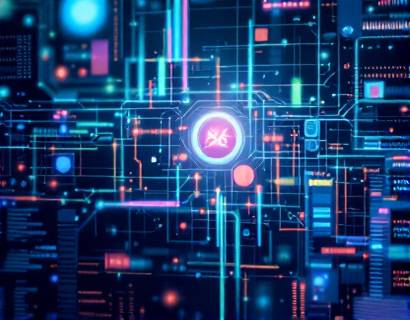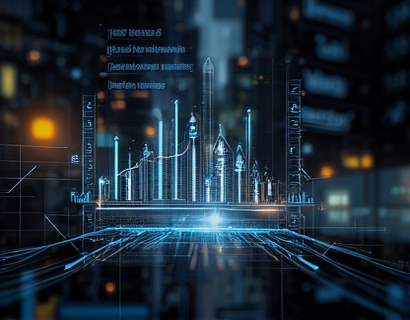Crypto and AI Power: Transforming Digital Engagement with Next-Gen Ucosystem Solutions
The intersection of blockchain technology and artificial intelligence (AI) is giving rise to a new era of digital engagement, characterized by enhanced security, unparalleled personalization, and interactive experiences. This transformative integration is not just a technological advancement but a paradigm shift in how we interact with digital platforms and services. For tech enthusiasts and professionals, understanding the dynamics of this fusion is crucial, as it holds the key to unlocking innovative solutions that can redefine user experiences across various industries.
The foundation of this transformation lies in the unique properties of blockchain technology. Blockchain, known for its role in cryptocurrencies, offers a decentralized, transparent, and secure way to manage data and transactions. When combined with AI, which excels in pattern recognition, predictive analytics, and automated decision-making, the potential for creating robust and intelligent digital ecosystems becomes immense. This article delves into how these technologies are being leveraged to enhance digital engagement, focusing on security, personalization, and interaction.
Enhanced Security through Blockchain and AI
Security is a paramount concern in the digital world, and the integration of blockchain and AI addresses this need effectively. Blockchain's inherent security features, such as immutability and cryptographic hashing, ensure that data once recorded cannot be altered without detection. AI complements this by providing advanced threat detection and response mechanisms. Machine learning algorithms can analyze vast amounts of data in real-time to identify anomalies and potential security breaches, enabling proactive measures to protect user data and transactions.
For instance, AI-driven security systems can monitor network activities continuously, learning from past attacks to improve detection accuracy over time. This synergy between blockchain and AI creates a multi-layered security approach that is both robust and adaptive, making it difficult for malicious actors to compromise the system. In the context of digital engagement, this means users can interact with platforms and services with greater confidence, knowing their data and transactions are secure.
Personalization at Scale with AI and Blockchain
Personalization is another area where the combination of blockchain and AI is making significant strides. Traditionally, personalization relies on collecting and analyzing user data to tailor experiences. However, this approach often faces challenges related to data privacy, scalability, and the quality of insights. Blockchain and AI address these challenges by providing a decentralized and secure way to manage user data while enhancing the accuracy and relevance of personalized content.
Blockchain enables the creation of decentralized identity systems, where users have control over their personal data. This data can be shared selectively with service providers, ensuring privacy while still allowing for personalized experiences. AI algorithms can process this data to deliver highly customized content, recommendations, and interactions. For example, a decentralized streaming service can use AI to analyze a user's viewing history stored on the blockchain, offering a curated playlist that evolves based on real-time preferences and trends.
Moreover, the use of smart contracts in blockchain can automate and enforce personalization rules, ensuring that user preferences are respected and applied consistently across different services. This not only enhances the user experience but also builds trust, as users feel more in control of their data and interactions.
Interactive Experiences through AI-Powered Ucosystems
The integration of AI and blockchain is not just about security and personalization; it is also revolutionizing how users interact with digital platforms. AI-powered ucosystems are emerging as interactive environments where users can engage in meaningful and dynamic ways. These ucosystems leverage AI to create intelligent agents, chatbots, and virtual assistants that can understand and respond to user needs in real-time.
For example, in a decentralized gaming platform, AI can generate dynamic game scenarios based on player behavior and preferences, ensuring a unique experience for each user. Blockchain ensures that in-game assets and achievements are securely stored and traded, providing a transparent and fair gaming environment. Users can also participate in governance through decentralized autonomous organizations (DAOs), where AI facilitates decision-making processes based on community input.
Another exciting application is in the realm of virtual reality (VR) and augmented reality (AR). AI can enhance these experiences by creating adaptive environments that respond to user actions and emotions. Blockchain can secure the ownership and trading of digital assets within these virtual spaces, such as virtual real estate or unique digital items. This combination not only enriches the user experience but also opens new avenues for monetization and community building.
Case Studies and Real-World Applications
Several projects are already demonstrating the potential of blockchain and AI in transforming digital engagement. One notable example is a decentralized social media platform that uses blockchain to give users ownership of their data and content. AI algorithms curate personalized feeds based on user interactions and preferences, while smart contracts ensure that content creators are fairly compensated for their work. This model not only enhances user engagement but also fosters a more equitable and transparent community.
In the finance sector, blockchain and AI are being used to create intelligent investment advisors. These AI-driven platforms analyze market data stored on the blockchain, providing users with personalized investment recommendations. The decentralized nature of the platform ensures that data is secure and transparent, reducing the risk of fraud and enhancing trust among users.
Another area where these technologies are making an impact is in the Internet of Things (IoT). AI can process and analyze data from various IoT devices, while blockchain ensures secure and tamper-proof data storage and transmission. This synergy enables smart homes and cities to function more efficiently, with devices communicating and making decisions based on real-time data, all while maintaining user privacy and security.
Challenges and Future Prospects
Despite the promising potential, the integration of blockchain and AI in digital engagement faces several challenges. One major hurdle is the technical complexity involved in building and maintaining these systems. Developers need to have a deep understanding of both blockchain and AI to create seamless and efficient ucosystems. Additionally, the scalability of these solutions remains a concern, as blockchain networks can sometimes struggle with high transaction volumes.
Regulatory challenges also play a significant role. As these technologies evolve, regulatory frameworks need to adapt to ensure that user rights are protected while fostering innovation. Collaboration between technologists, policymakers, and industry stakeholders is essential to navigate these challenges and create a conducive environment for growth.
Looking ahead, the future of blockchain and AI in digital engagement is bright. As technology advances, we can expect more sophisticated AI algorithms that can process and analyze data more efficiently, further enhancing personalization and security. The development of interoperable blockchain platforms will also facilitate better integration and collaboration between different ucosystems, creating a more connected and cohesive digital landscape.
In conclusion, the combination of blockchain and AI is not just a technological trend but a transformative force that is reshaping digital engagement. By enhancing security, enabling personalized experiences, and creating interactive ucosystems, these technologies are paving the way for a more secure, engaging, and user-centric digital world. For those interested in this space, staying informed about the latest developments and innovations is key to harnessing the full potential of this exciting frontier.











